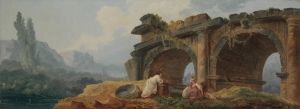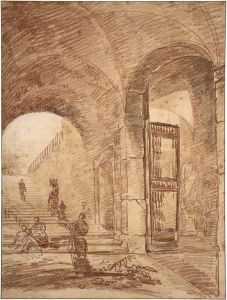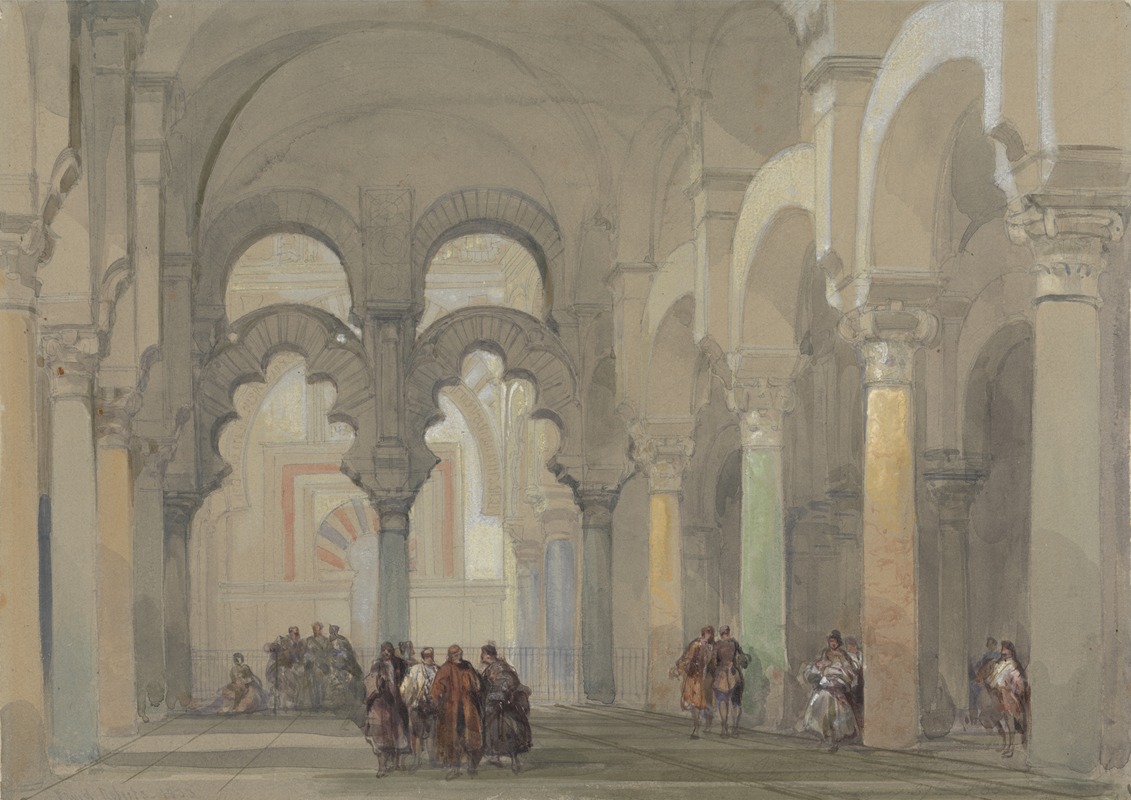
The Mosque at Cordova
A hand-painted replica of David Roberts’s masterpiece The Mosque at Cordova, meticulously crafted by professional artists to capture the true essence of the original. Each piece is created with museum-quality canvas and rare mineral pigments, carefully painted by experienced artists with delicate brushstrokes and rich, layered colors to perfectly recreate the texture of the original artwork. Unlike machine-printed reproductions, this hand-painted version brings the painting to life, infused with the artist’s emotions and skill in every stroke. Whether for personal collection or home decoration, it instantly elevates the artistic atmosphere of any space.
David Roberts (1796–1864) was a Scottish painter known for his detailed and historically significant depictions of architectural and cultural landmarks. One of his works, The Mosque at Cordova, captures the grandeur of the Great Mosque of Córdoba (La Mezquita), a historic structure located in Córdoba, Spain. This mosque is one of the most renowned examples of Islamic architecture in Europe and reflects the cultural and artistic achievements of the Umayyad Caliphate in Al-Andalus during the medieval period.
The painting by Roberts is part of his extensive body of work documenting significant sites across Europe, the Middle East, and North Africa. Roberts traveled widely and created a series of sketches and paintings that were later turned into lithographs, which gained widespread popularity in the 19th century. His works are celebrated for their accuracy and attention to detail, as well as for their ability to evoke the atmosphere of the places he depicted.
In The Mosque at Cordova, Roberts focuses on the interior of the Great Mosque, highlighting its iconic horseshoe arches and intricate columns. The mosque, originally constructed in the 8th century under the direction of Abd al-Rahman I, underwent several expansions over the centuries, becoming one of the largest and most impressive mosques in the Islamic world. Its architectural features, such as the alternating red and white voussoirs on the arches, are prominently featured in Roberts' painting, showcasing the unique blend of Roman, Visigothic, and Islamic influences that characterize the structure.
By the time Roberts created this work, the mosque had already undergone significant changes. Following the Reconquista in 1236, the mosque was converted into a Catholic cathedral, and a Renaissance-style nave was later added in the 16th century. Despite these modifications, much of the original Islamic architecture remains intact, and Roberts' painting captures this blend of cultural and religious history.
David Roberts' works, including The Mosque at Cordova, were widely admired for their ability to bring distant and exotic locations to European audiences. His paintings and lithographs contributed to a greater appreciation of the architectural and cultural heritage of the regions he depicted. Today, the Great Mosque of Córdoba is a UNESCO World Heritage Site and remains a symbol of the rich and complex history of Spain.
Roberts' painting serves as both an artistic and historical record of this iconic structure, reflecting his skill as an artist and his dedication to documenting the world's architectural treasures.





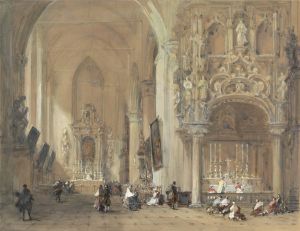
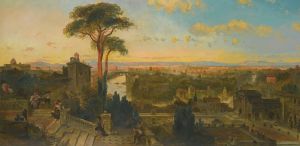
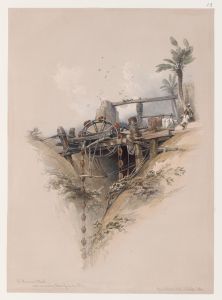
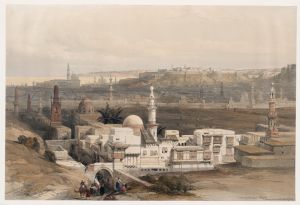


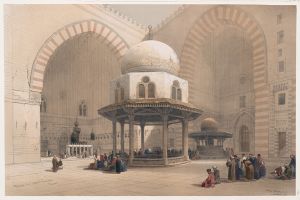
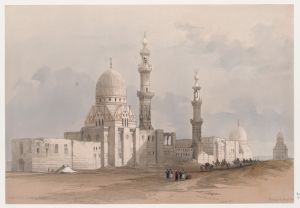
![Group of Nubians, Wady Kardasey [sic] [Qirtâsî].](/imgs/217579/s/david-roberts-group-of-nubians-wady-kardasey-sic-qirtasi-c64109d2.jpg)

